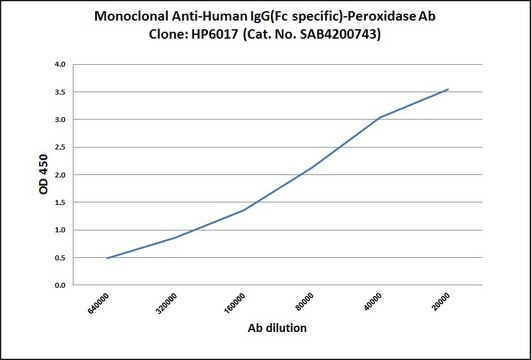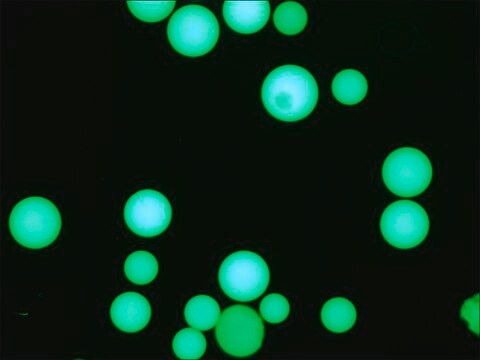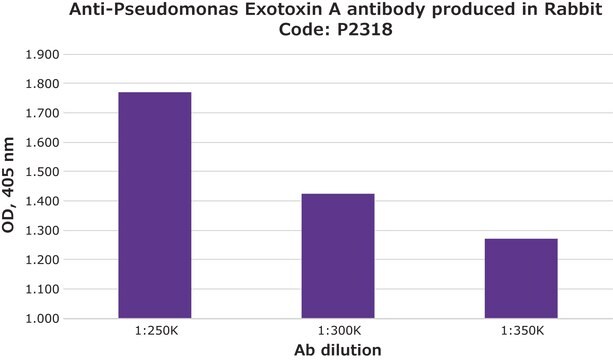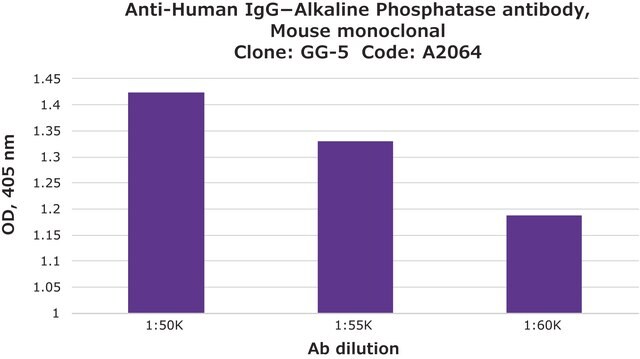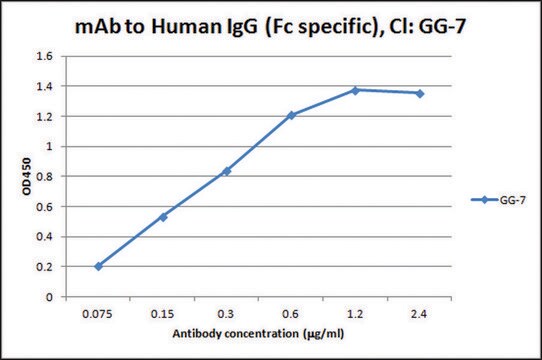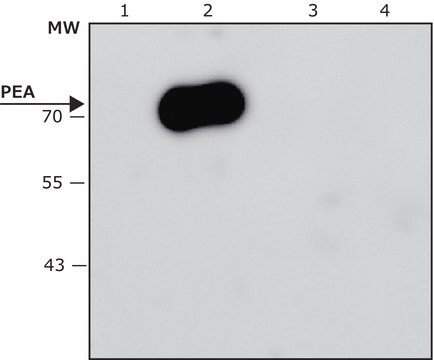SAB4200790
Anti-Human IgG (Fc specific)-Peroxidase antibody, Mouse monoclonal
clone GG-7, purified from hybridoma cell culture
Synonyme(s) :
Anti-Human immunoglobulin G
About This Item
Produits recommandés
Source biologique
mouse
Niveau de qualité
Conjugué
peroxidase conjugate
Forme d'anticorps
purified from hybridoma cell culture
Type de produit anticorps
primary antibodies
Clone
GG-7, monoclonal
Forme
lyophilized powder
Espèces réactives
human
Technique(s)
direct ELISA: 1:40,000-1:80,000 using 2.5 μg/mL human IgG1 for coating
Isotype
IgG1
Conditions d'expédition
dry ice
Température de stockage
−20°C
Modification post-traductionnelle de la cible
unmodified
Description générale
The Fc fragment has various important functions such as complement fixation, site for rheumatoid factor (autoantibody directed to Fc) attachment, passage through the placental membrane and protein A binding. A certain population of lymphocytes also possess an "Fc receptor". These functions indicate the importance of immunoreagents specific for the Fc fragment of Human IgG.
Monoclonal Anti-Human IgG (Fc specific) is specific for the Fc fragment of Human IgG and is observed with all human IgG subclasses but not with the Fab fragment of human IgG, purified light chains, human IgA or human IgM.
Immunogène
Application
Forme physique
Autres remarques
Vous ne trouvez pas le bon produit ?
Essayez notre Outil de sélection de produits.
Mention d'avertissement
Warning
Mentions de danger
Conseils de prudence
Classification des risques
Skin Sens. 1
Code de la classe de stockage
12 - Non Combustible Liquids
Classe de danger pour l'eau (WGK)
WGK 2
Point d'éclair (°F)
Not applicable
Point d'éclair (°C)
Not applicable
Faites votre choix parmi les versions les plus récentes :
Certificats d'analyse (COA)
Vous ne trouvez pas la bonne version ?
Si vous avez besoin d'une version particulière, vous pouvez rechercher un certificat spécifique par le numéro de lot.
Déjà en possession de ce produit ?
Retrouvez la documentation relative aux produits que vous avez récemment achetés dans la Bibliothèque de documents.
Notre équipe de scientifiques dispose d'une expérience dans tous les secteurs de la recherche, notamment en sciences de la vie, science des matériaux, synthèse chimique, chromatographie, analyse et dans de nombreux autres domaines..
Contacter notre Service technique